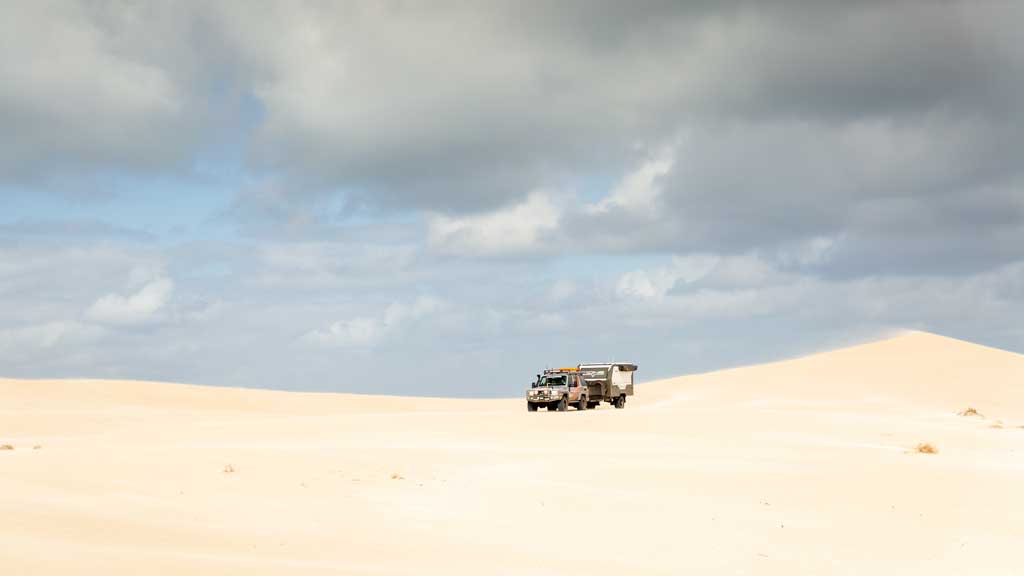
Learning how to drive on sand will more than likely be the first thing you do in your 4×4. It’s like a rite of passage. You buy your first 4×4 and then find the closest beach that you can drive on. Perfect.
And while there is probably no better feeling than driving along an open beach with the windows down and the salty breeze blowing in your face, it doesn’t come without peril.
When things go wrong, they can go wrong in a big way.
But I’m not here to scare you off. By following a few basic tips, we’ll have you getting to your favourite fishing spot or beachside camp in no time.
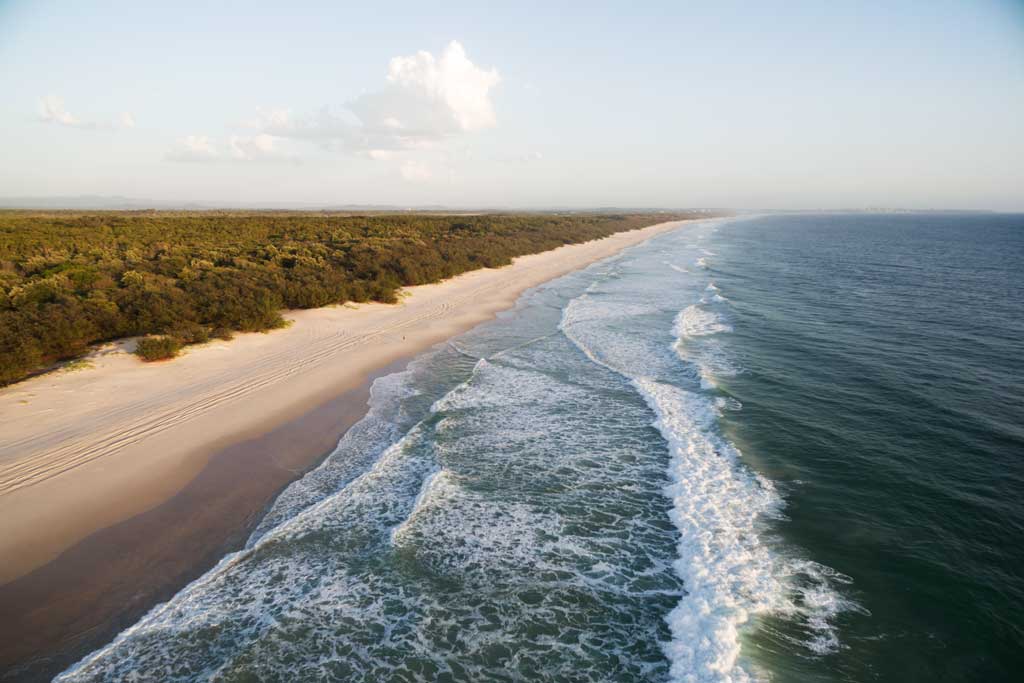


A perfect place to learn how to drive on sand.
Table of Contents
ENGAGE 4WD
Putting your 4WD into 4WD is the first thing you need to do when you encounter soft sand.
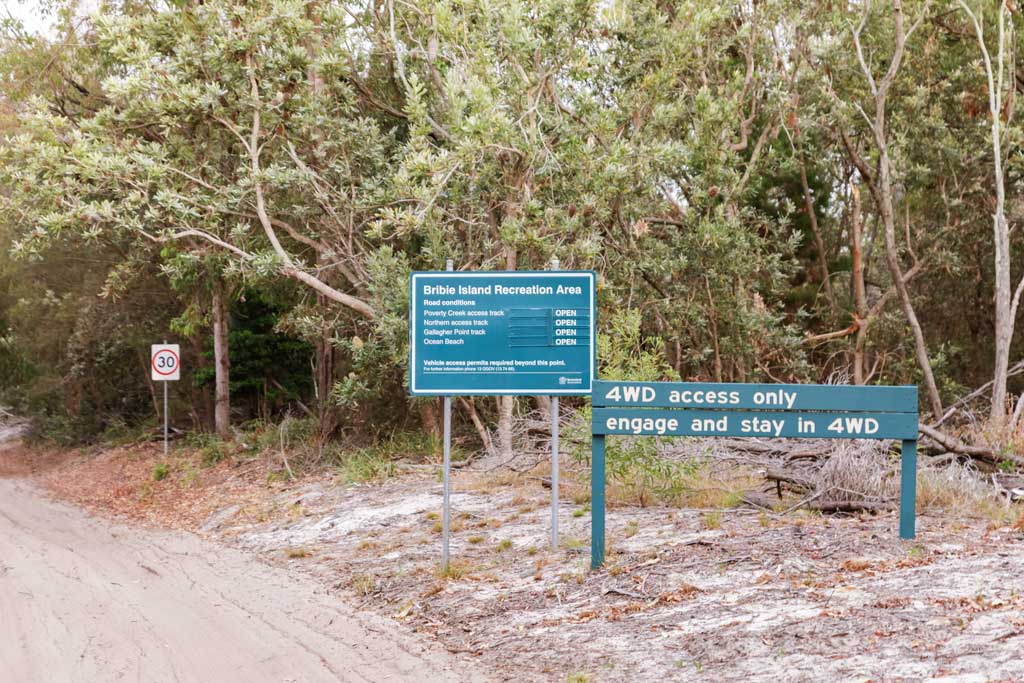


While this might sound silly, you’d be surprised just how many people have got bogged because they weren’t in 4WD. I know this from personal experience!
A big, heavy 4WD vehicle won’t get very far in the soft sand unless the front wheels are doing some work too.
BEST TYRE PRESSURES FOR SAND DRIVING
OK. This topic can seriously open up the biggest Pandora’s Box, and not just for the best tyre pressures for sand.
Sit around any campfire and throw the question out there, then sit back and watch the different opinions fly!
While this topic probably needs its own article, I’ll attempt to answer the question.
Well, the answer is: It depends!
It depends on the size and type of tyre that your vehicle is running. It also depends on the type of vehicle, and more importantly, how heavy that vehicle is. Then you’ve also got to factor in type of sand, and how soft it is.
See, I told you this topic needs its own article.
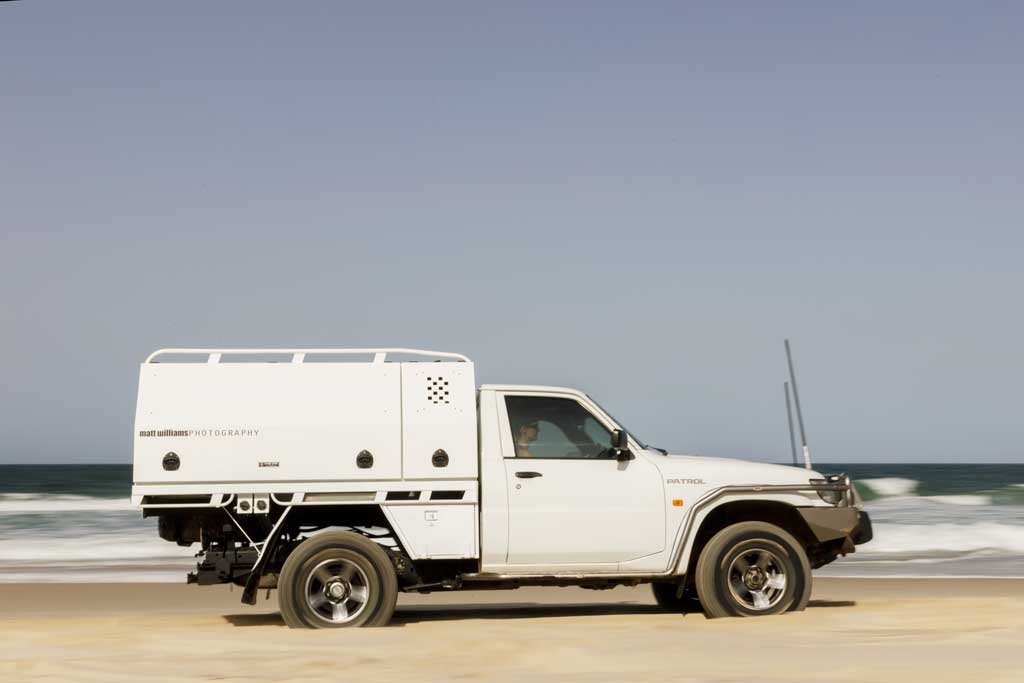


One thing is for sure though, reducing your tyre pressures will have the single largest influence on whether you get bogged or not.
As a general guide, start around 18 to 20psi. Depending on how heavy your 4WD is, this should allow the vehicle to “float” on the top of the sand. By reducing the pressure in your tyres, you are increasing the contact patch, or surface area of your tyre with the sand, thus reducing your overall downward pressure from the vehicle. This reduces the chance of getting bogged.
If you find your engine is working really hard, or feel as though you are ploughing through the sand, then your pressures are too high. Stop and let another couple of psi out of each tyre. This will reduce wear on your engine and minimise track damage. Depending on the conditions, it can be a bit of trial and error, until you start to “float’ on top of the sand.
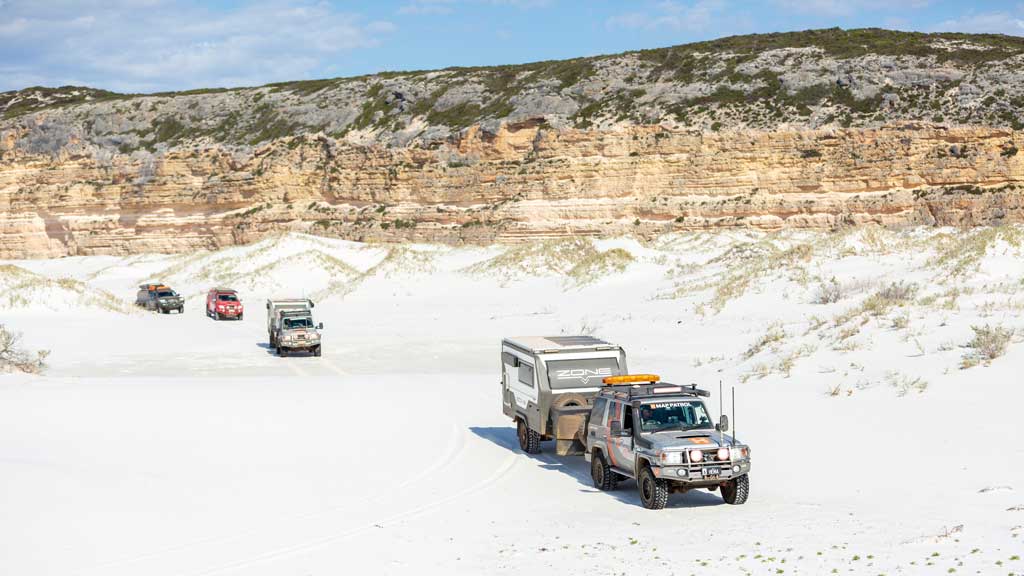


If you encounter soft powdery sand, or find yourself seriously bogged, you may have to reduce your pressures significantly. Sometimes as low as 6 or 8psi. Only do this for an absolute emergency, and re-inflate as soon as possible afterwards.
Just remember, deflating your tyres too much increases the risk of rolling a tyre off the rim.
Whenever you reduce your tyre pressures, you must alter your driving style accordingly. Lower tyre pressures adversely affect the handling characteristics of your 4×4. Lower tyre pressures = lower speed!
BEST WAYS TO DEFLATE YOUR TYRES FOR SAND DRIVING
A STICK (OR MAYBE YOUR KEYS!)
I think everyone starts out using a stick, or their keys, to deflate their tyres. They’re cheap and easy to use, but I am still yet to find someone that can accurately guess the pressure of a tyre just by looking at it.



Yeah, you can count to thirty for each tyre too, but the same problem arises of not knowing the pressure of each tyre. As well as that, you’ve got to find just the right stick to be able to fully depress the valve!
So, even with a trusty stick, you’re still going to need a tyre gauge.
TYRE GAUGE
Now, I bought my tyre gauge from Supercheap Auto about 25 years ago and I’ve still got it. It lives in my centre console. I don’t use it for checking the pressures of my tyres when I’m letting them down with a stick anymore. It’s there purely for when I’m airing back up.
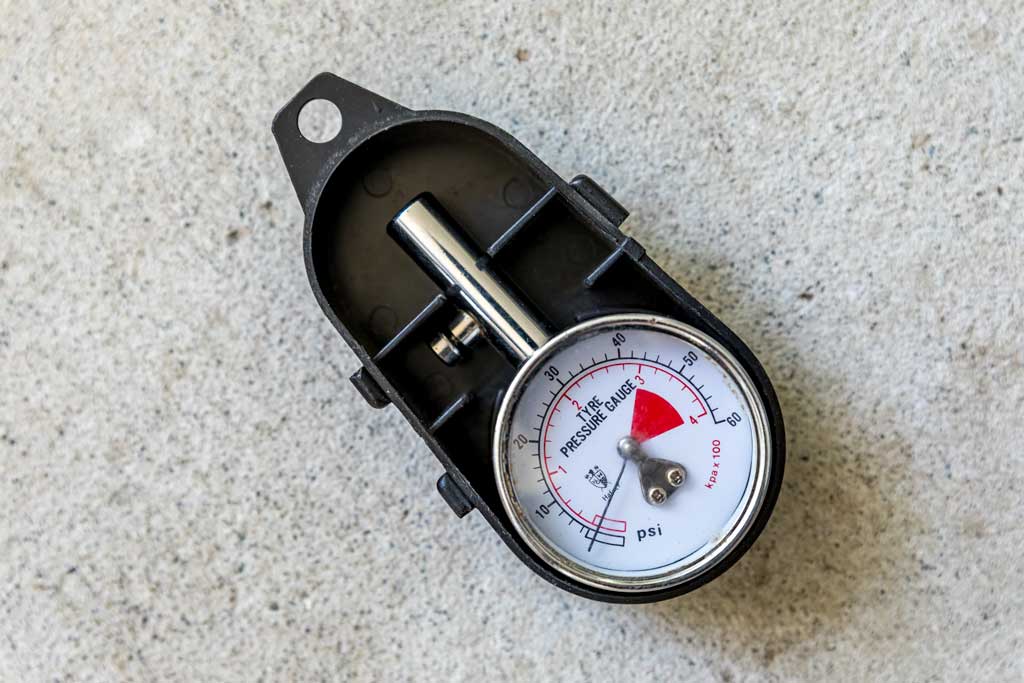


STAUN TYRE DEFLATORS
Staun Tyre Deflators are the original tyre deflator to hit the market, and again, I have had mine since 2004. They are an easy and accurate way to reduce your tyre pressure to a pre-determined figure.
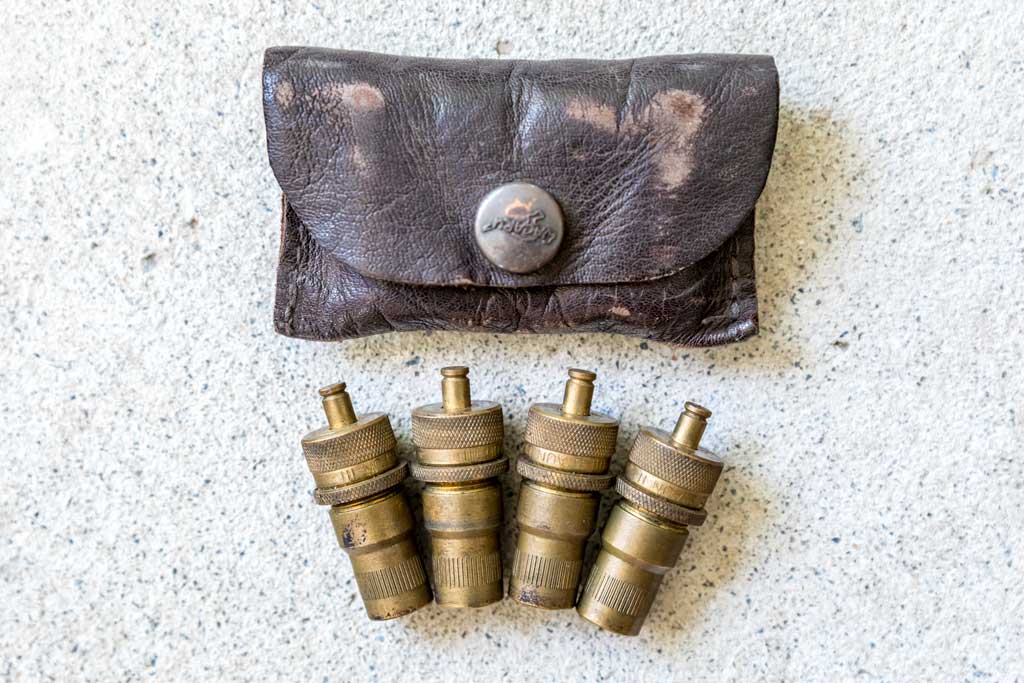


They simply screw on to your valve stem and they will deflate your tyres. When they reach the set pressure, they automatically stop. Remove them from your tyres and you are all set to go.
The only issue I have had with the Staun Deflators, is that sometimes the locking ring can loosen after driving over corrugations. This in turn allows the pressure ring to move, resulting in a different pressure.
Also, being pre-set, the Staunies have only one pressure, so if you do find you have to reduce your pressure further, you’ll still need to find a stick and use your tyre gauge.
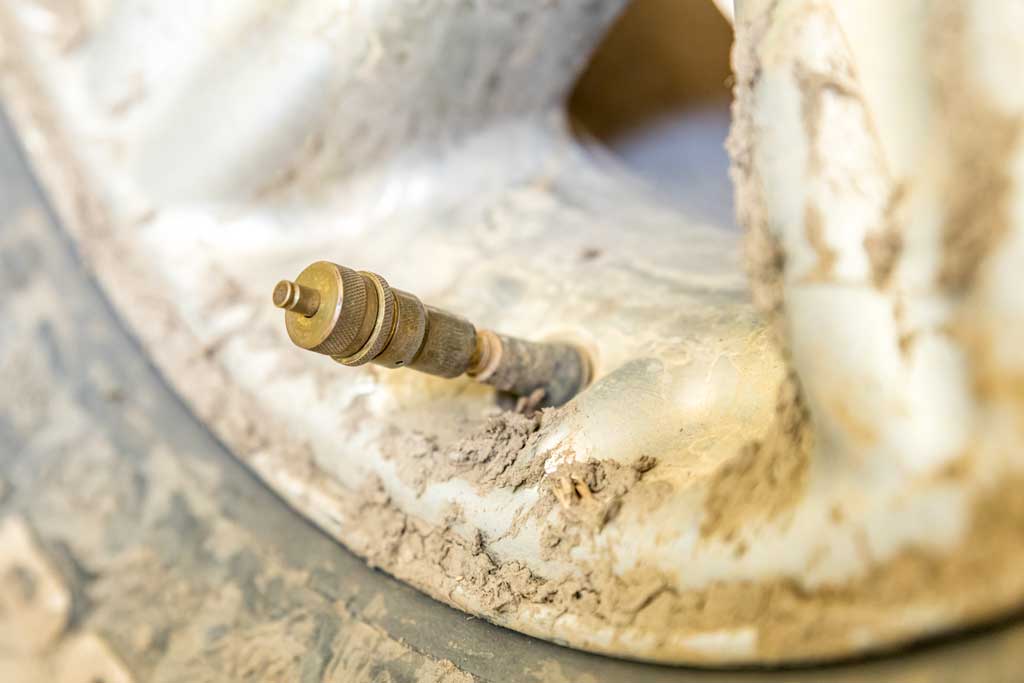


One way to get around this is to have two of your Stauns set at say 18psi, and the other two set at 15psi. But if you need to go lower, you’re back to looking for a stick!
ARB E-Z DEFLATOR
It seems that most of my tyre deflation equipment is getting pretty long in the tooth. But then again, it does prove that if you buy quality gear and look after them, then they will look after you.
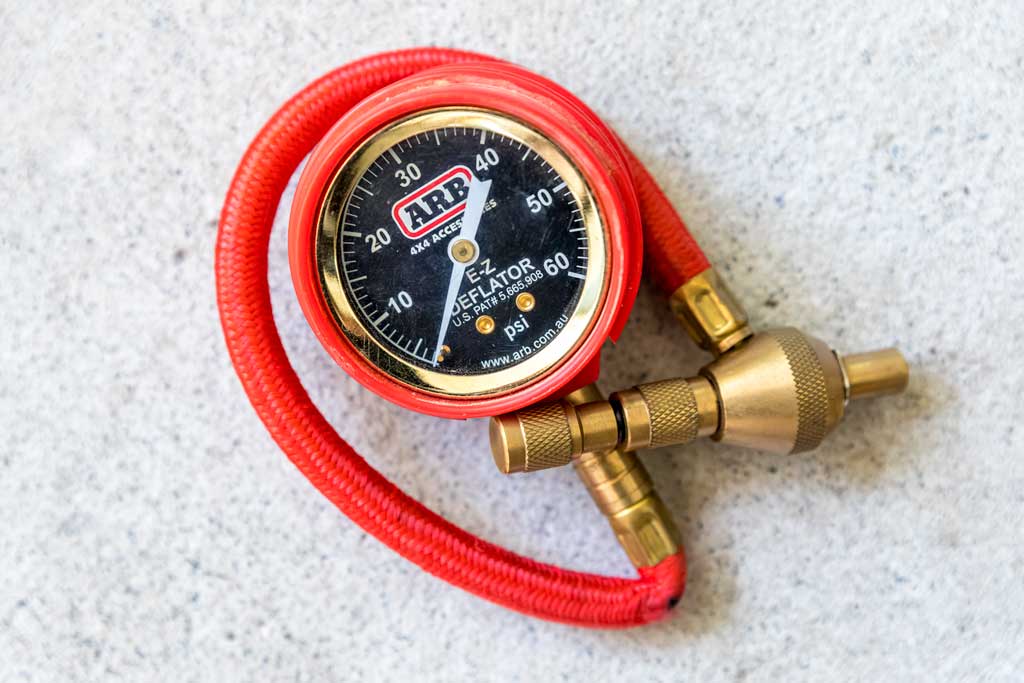


I got my ARB E-Z Deflator as soon as they hit the market, which was back in 2007 if my memory serves me correctly. Since then, it has been my go-to tyre deflation device, with the Stauns being there only as a backup.
The E-Z Deflator allows for super quick deflation thanks to the full removal of the valve core. It also allows you to lower your pressure to whatever you need, thanks to it being manually operated.
DRIVING TECHNIQUES – HOW TO DRIVE ON SAND
A word of warning. Whenever you lower your tyre pressures, the handling ability of your 4×4 is greatly affected. Your driving style must change accordingly.
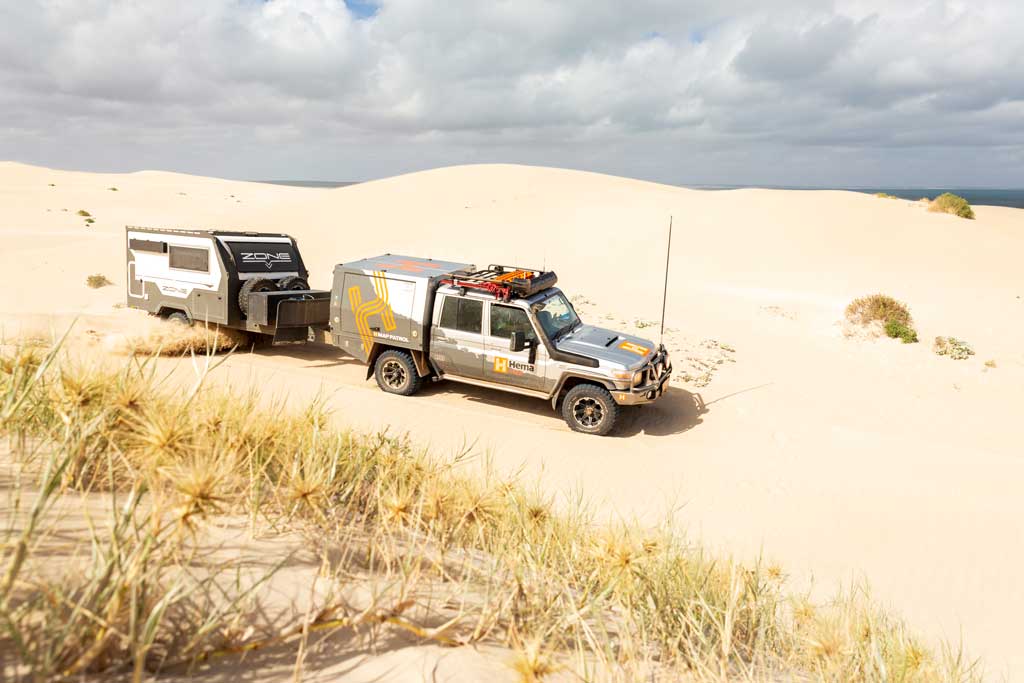


MOMENTUM AND SAND DRIVING
When you’re first learning how to drive on sand, getting the right amount of momentum will likely be the hardest part to master. Go too slow and you run the risk of losing all power and getting bogged. Too fast and there’s the potential for any number of accidents.
It’s a bit like the Goldilocks principal, it has to be just right!
The trick is to have just enough momentum to keep the tyres floating along on top of the sand. As soon as you start to feel your vehicle slow, or as RPM drops, you’ll want to respond with more throttle input. Try to anticipate soft or boggy sections, or inclines in advance and adjust throttle input accordingly.
STAY IN THE RUTS
If you can, drive in the wheel ruts made by previous vehicles. The sand has already been compacted, making it easier to drive.
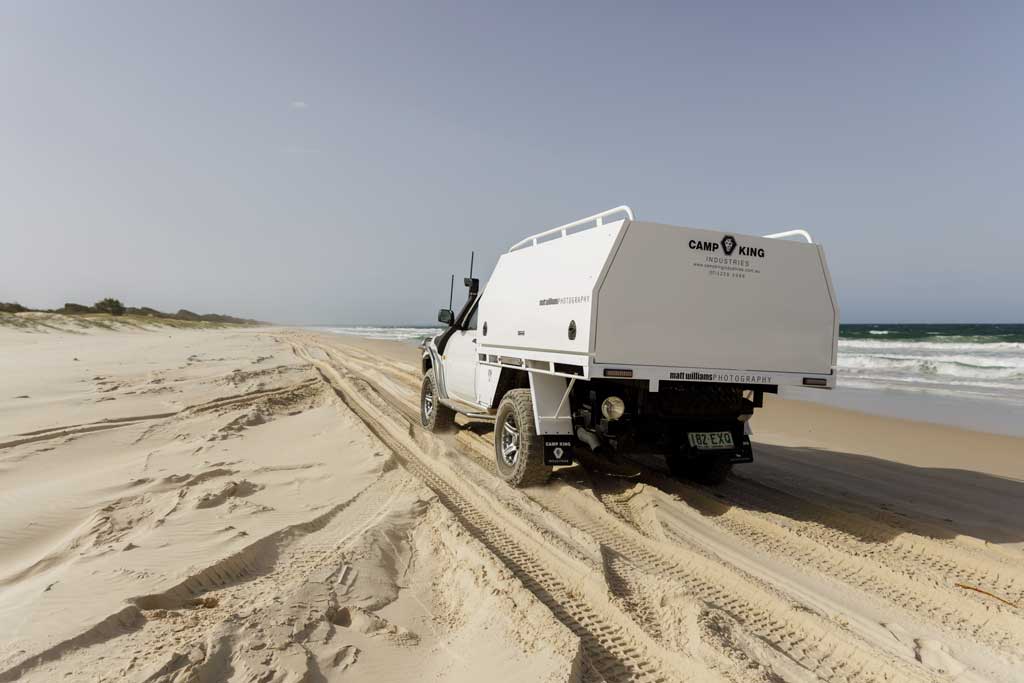


Also, don’t fight the steering wheel when driving in a rut. Use the ruts, rather than steering and just try to gently guide your vehicle along the track.
STEERING AND BRAKING
Steering in the sand is unlike any other surface you are likely to drive on. As mentioned above, don’t try and fight the steering wheel. Every steering input must be gentle.
If not, with reduced tyre pressures, you run an increased risk of rolling a tyre off the bead. If this is done at the same time as a sharp cornering manoeuvre with an excess of momentum, there is a high likelihood of a vehicle rollover.
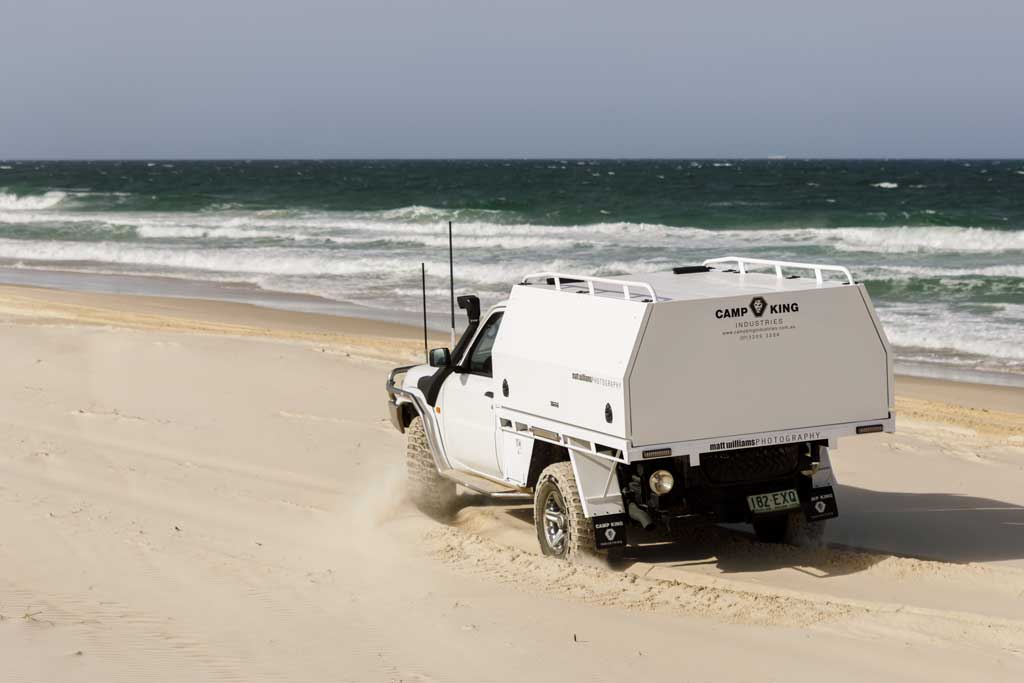


When you need to turn, try to anticipate the turn as early as possible. A wide, sweeping turn is much better than a sharp turn.
When stopping on a beach, try to minimise the use of your brakes. Try instead to roll to a stop. This will create less of a mound of sand in front of your tyres, enabling you to drive off easier. If you do struggle to get going again, reverse a short distance and try again.
When parking your vehicle on a beach, always try to park with your vehicle facing down the beach. This way, you can use gravity to help you get started again.
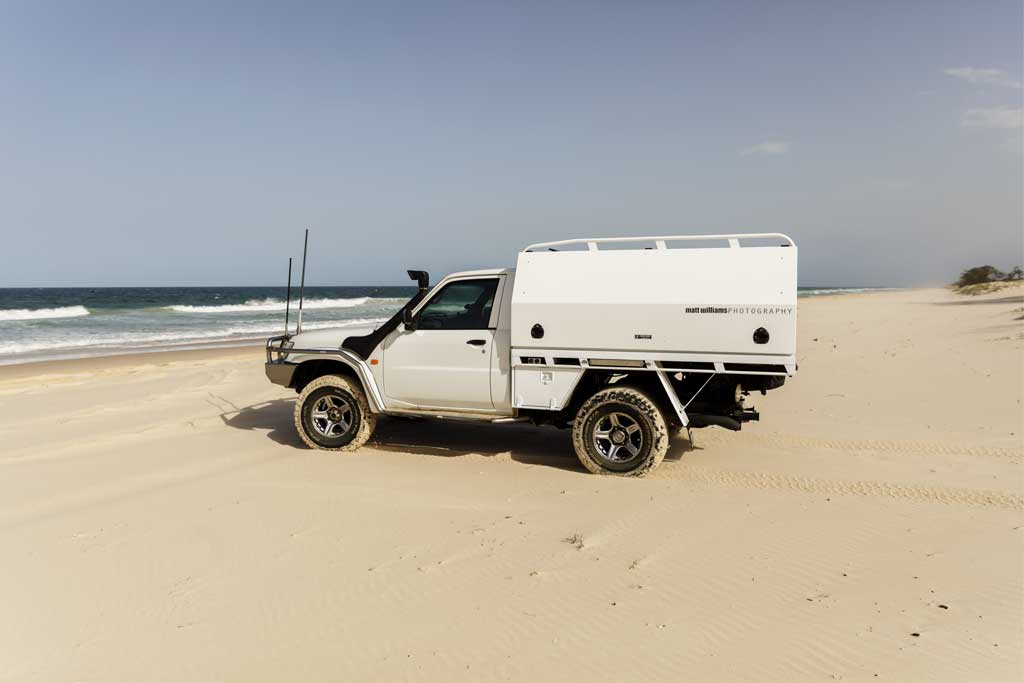


OBEY THE ROAD RULES
Most beaches are treated as gazetted roads, and as such you must treat the beach like a road. All the normal road rules apply.
Posted speed limit signs must be obeyed as well as wearing your seat belt and keeping to the left. If there isn’t a posted speed limit, drive at a speed that allows you to stop in a hurry if you need to (approximately 40km/hr)
DON’T DRIVE OVER VEGETATED DUNES
Use only pre-existing access tracks.
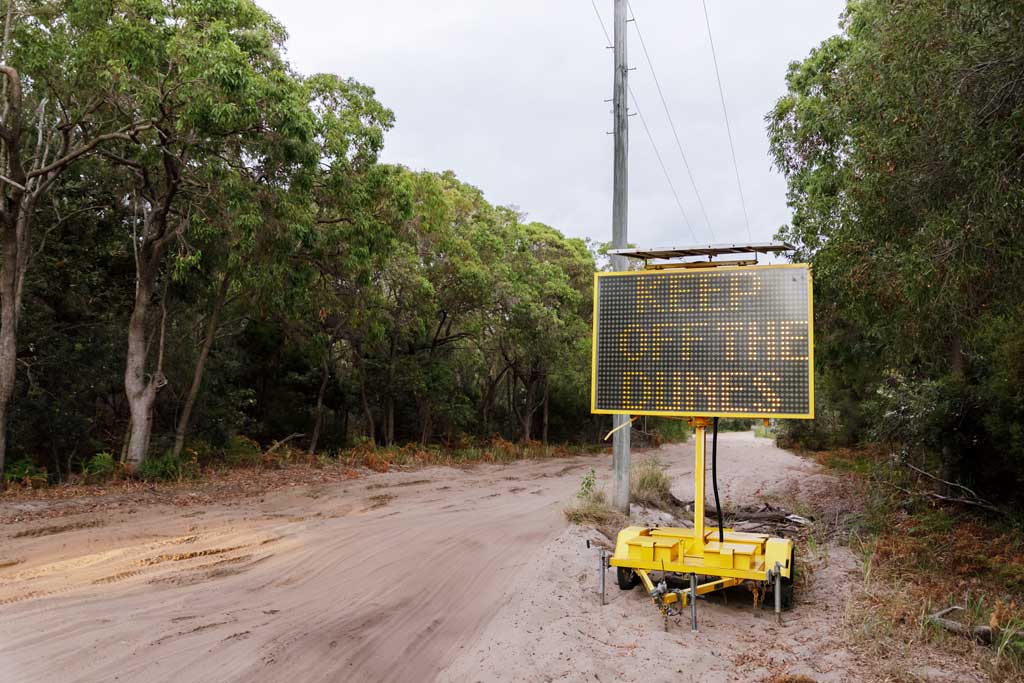


While this may sound like a no-brainer, you’ll be surprised just how many times you will encounter wheel tracks heading up and over a vegetated dune. Often, this is done by people who a) have no idea, or b) have not read the tides properly.
Frontal dunes are held together by grasses, small plants and trees. Without this, the likelihood of dune erosion is very high. Also, the dunes are often home to many coastal birds and other animals.
TOWING ON THE SAND
These days, a lot of people pull a trailer. Be that a garden variety box trailer with extra camping gear for a fortnight up at Fraser Island, a camper trailer, a caravan, or a boat.
The same principles of how to drive on sand for your vehicle, also apply to your trailer.
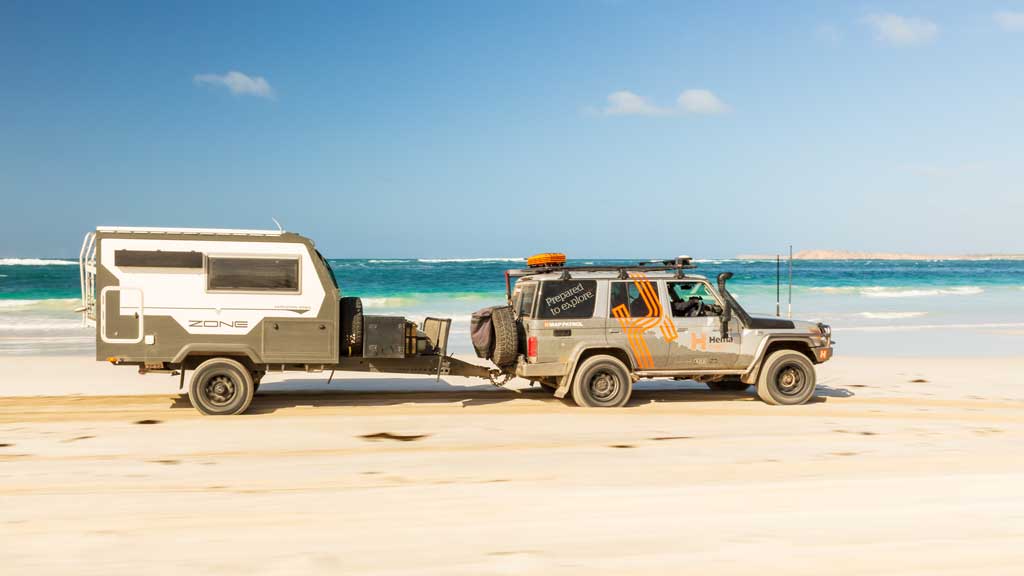


By lowering the pressure in your trailer tyres, will allow the tyres to float on top of the sand. If you don’t the trailer tyres will sink, and the trailer will act like a big anchor, making it very hard to pull.
CHECK THE TIDES BEFORE BEACH DRIVING
If your sand driving has you hitting the beach, then you are going to need to know the tide times. Not paying attention to the tide times can be fraught with danger.
The general rule of thumb says that you should only drive on the beach two hours either side of low tide. This is when the beach is at its widest and you are able to drive on the firmer, hard packed sand closer to the water’s edge.
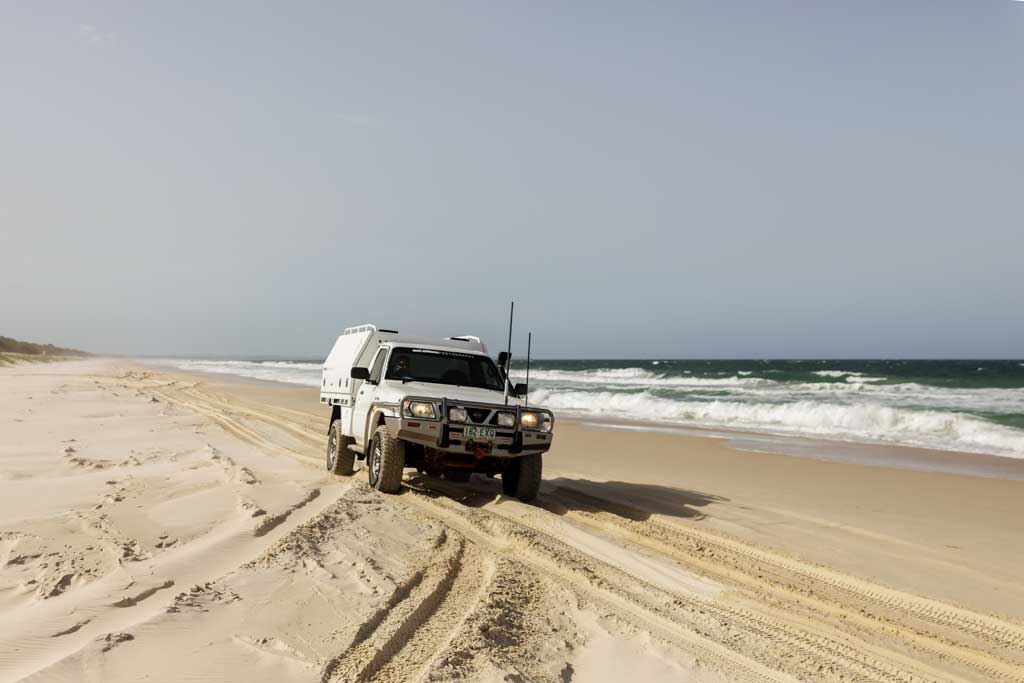


There are plenty of free apps available like Willy Weather and My Tide Times.
Watch out for the many hazards that can be associated with beach driving. One of the biggest are washouts, caused by the waves and an outgoing tide. Drive too fast and a washout can quickly ruin your day.
ESSENTIAL RECOVERY GEAR FOR DRIVING IN SAND
This section isn’t a “How To” on recovering a vehicle that has become bogged in the sand. It is simply a list of the most common, and most effective items that are used during sand recoveries.
Make sure you have a basic Recovery Kit before heading off-road. It is poor form to expect that your rescuer will also provide the recovery gear!
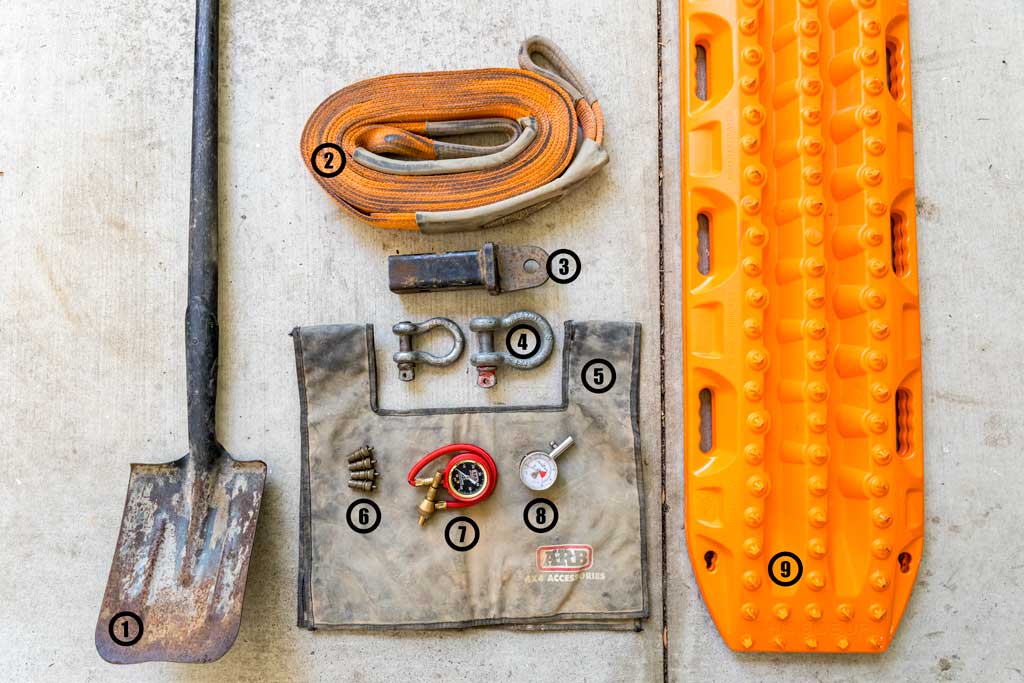


6. Staun Tyre Deflators 7. ARB E-Z Deflator 8. Tyre pressure gauge 9. MAXTRAX
LONG HANDLED SHOVEL
Getting bogged is a part of four-wheel-driving. Don’t worry. It happens to everyone sooner or later. That’s when you’re going to wish you had remembered to pack the long-handled shovel. If you’ve bogged yourself badly, you’re going to need to dig yourself out. A long-handled shovel will make the task easier.
SNATCH STRAPS
First things first. SNATCH STRAPS ARE DANGEROUS! People have lost their lives from using them incorrectly. Do not become a statistic!
If you haven’t been taught how to use one properly and safely, keep digging and letting more pressure out of those tyres.
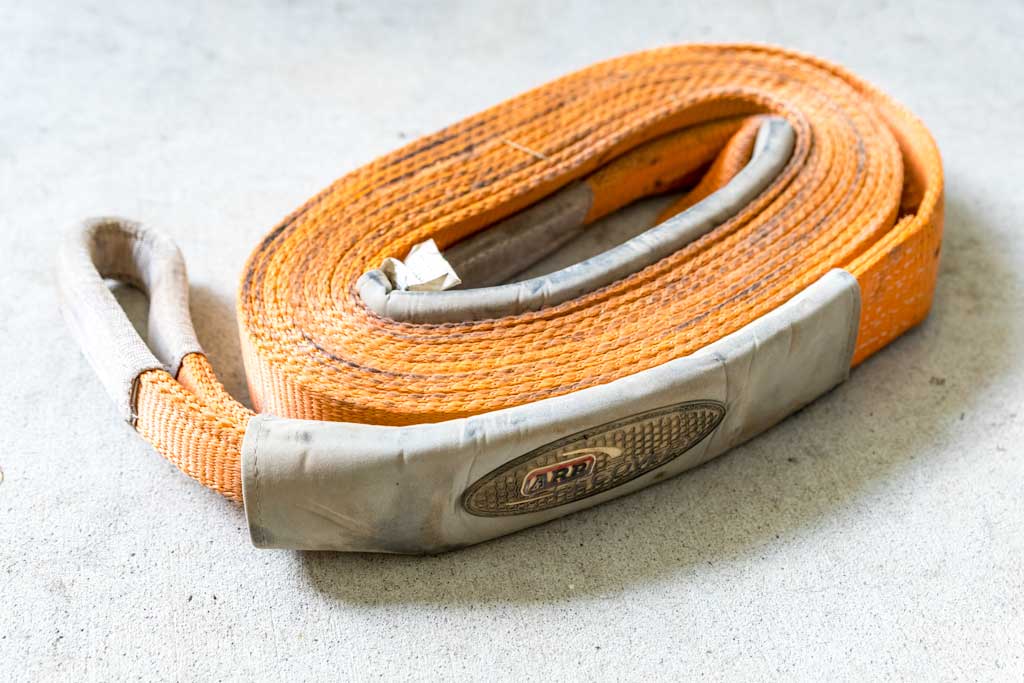


Snatch straps are only of use if there is another vehicle that isn’t bogged. Or you have managed to flag down a passer-by. Carry at least one in every vehicle.
RECOVERY/CABLE DAMPER
A recovery damper should be used whenever there is a connection between two vehicles. Or if a vehicle is connected to a solid point via a winch cable.
In the event of a failure, the cable damper may help to get the strap or cable to the ground as quickly as possible, helping to dissipate the energy from the attempted recovery. This limits the chances of it damaging your vehicle or worse.
RATED RECOVERY POINTS AND RATED SHACKLES
For the safest possible recovery, only use rated recovery points and shackles. Factory tie-down points or tow hooks are not rated for the massive loads associated with a 4WD recovery. Using them could result in damage to your vehicle or worse.
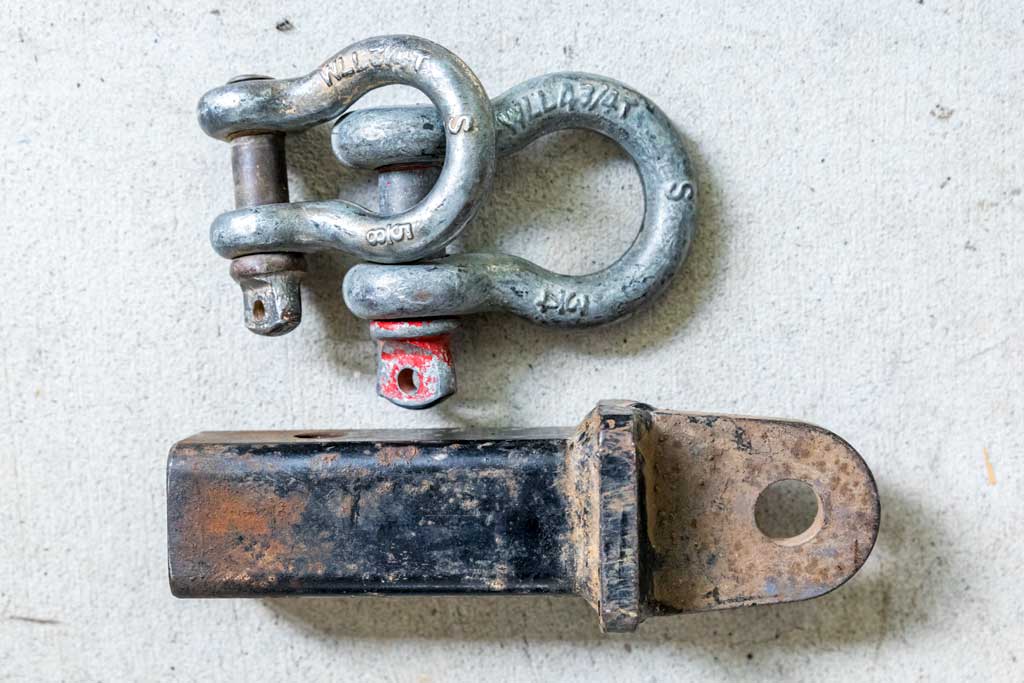


Soft shackles are now available, further reducing the potential for damage from a traditional bow shackle in the event of a failure.
MAXTRAX (OR SIMILAR TRACTION AIDS)
If you regularly head out by yourself, then a pair of MAXTRAX should be close to one of the first things packed. One set is great, but two sets are even better. These self-recovery items are worth their weight in gold.
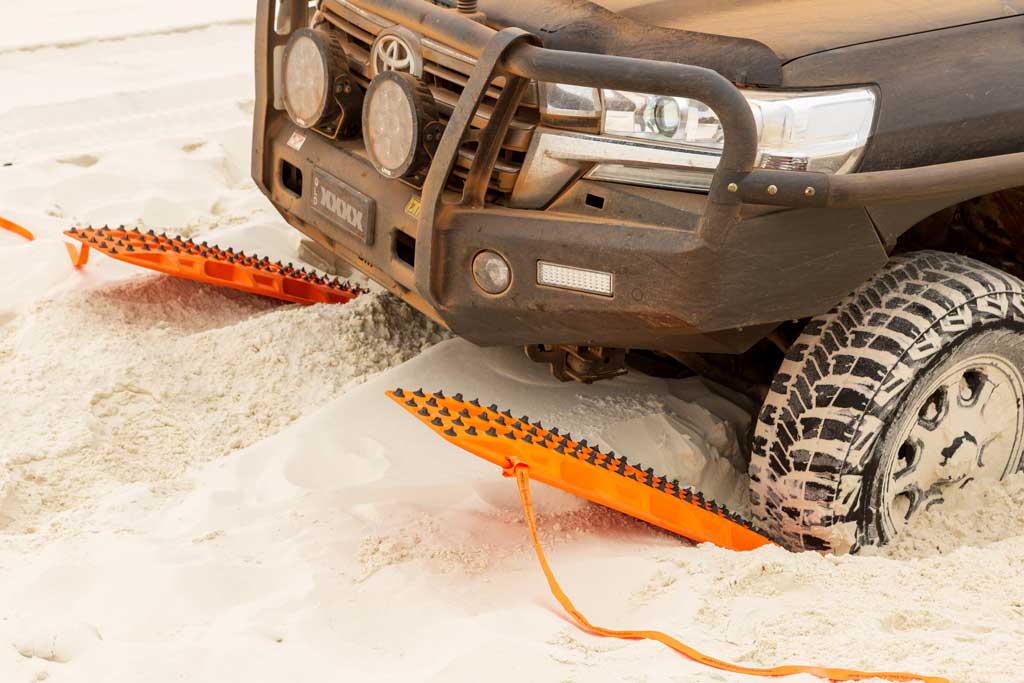


TYRE DEFLATORS
Make letting your tyres down for sand driving super quick and easy. Useful not just for sand driving and will pay for themselves over time.
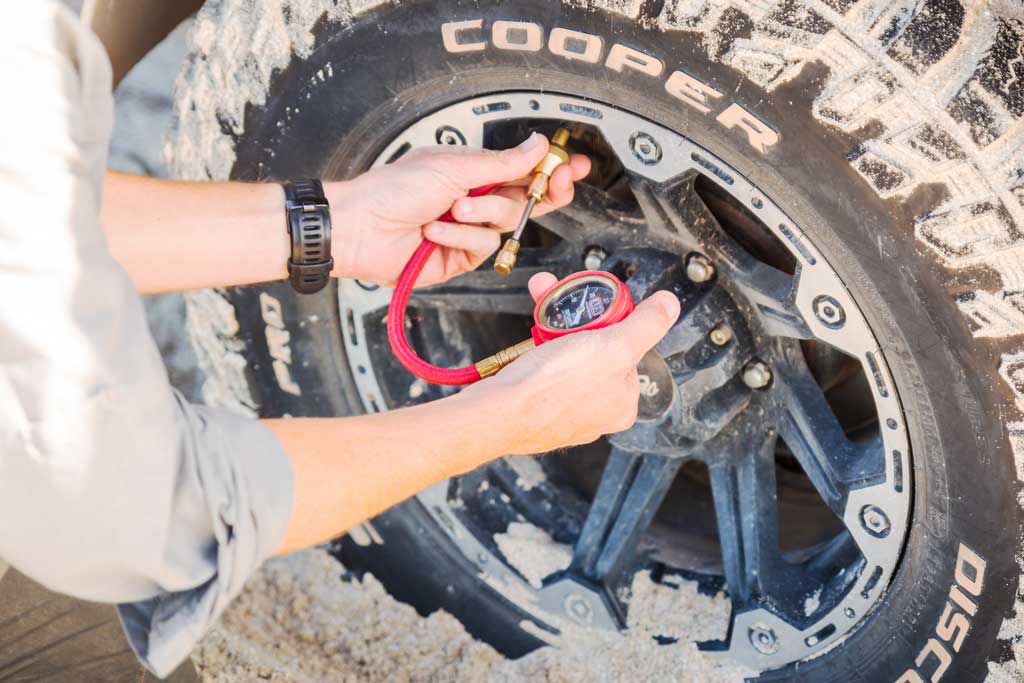


AIR COMPRESSOR
Whether portable or vehicle-mounted, a 12V air compressor will allow you to re-inflate your tyres without having to wait in line at the local servo for an hour.
TYRE PRESSURE GAUGE
If your air compressor doesn’t have a fancy inflator with a gauge, you’re going to need a quality tyre pressure gauge for when you’re airing back up at the end of the day.
UHF RADIO
A UHF radio is valuable for any type of 4WD situation and is needed to communicate with another driver when either being recovered or performing a recovery.
AIR UP
Once you’ve had enough fun for the day playing on the beach and it’s time to hit the bitumen, you’re going to need to pump your tyres back up. Sure, you can drive to the nearest service station, but it’s better to have one with you.
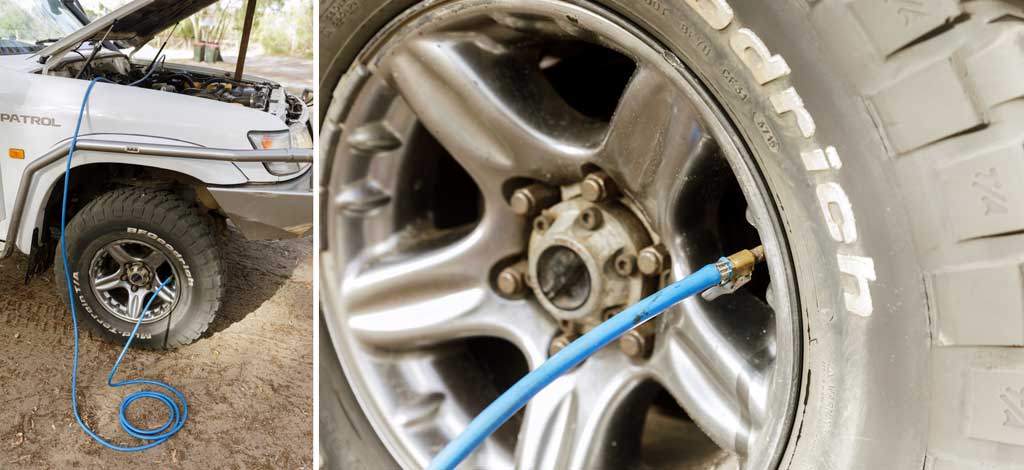


There is definitely no shortage of 12V compressors available from reputable aftermarket 4×4 accessory suppliers. You can choose either a vehicle-mounted or a portable unit.
Airing back up also applies when you’ve had to air down dramatically to get out of a nasty bog. Driving on hard surfaces with under-inflated tyres is a recipe for disaster. You run the risk of the tyre overheating and causing damage, or even a blowout.
LEARN FROM THE EXPERTS ABOUT HOW TO DRIVE ON SAND
There really is no substitute for experience. And while you can gain a lot of experience by just getting out there and giving it a go for yourself, you may find that it is worth your while to enrol in a course to learn how to drive on sand.
Learn from the experts and you will bring your skill levels up a lot quicker then what you would by yourself. Or learning bad habits from your mates!
A quick Google search will find plenty of authorised training providers in your area to teach you how to drive on sand.
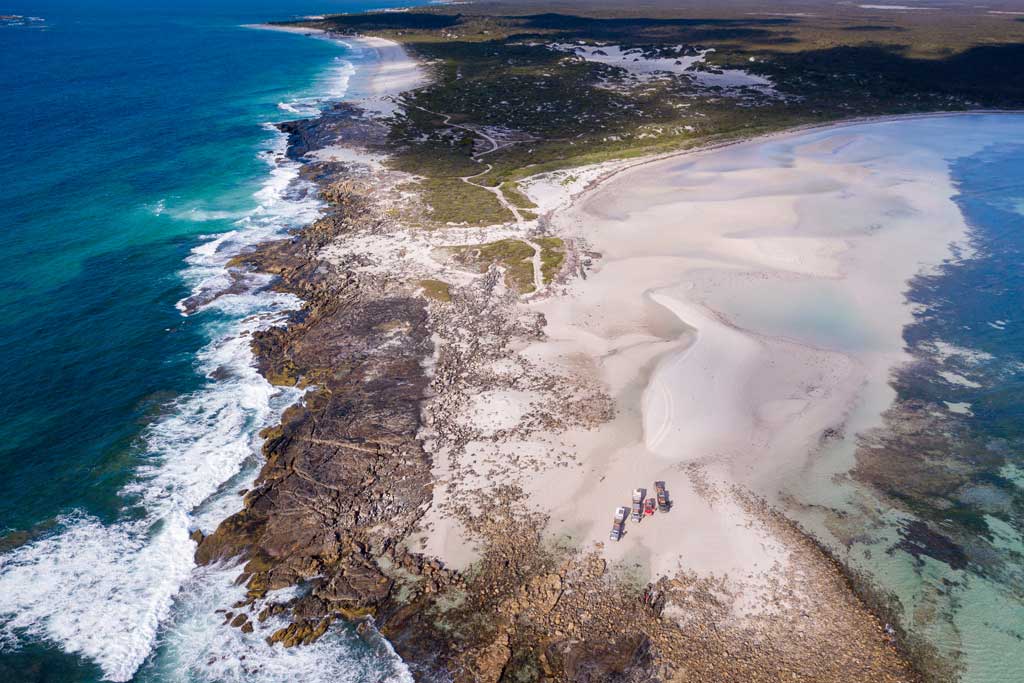


Point Malcolm, Western Australia.
About the Author:
Hi, I’m Matt. I camp, four-wheel drive, explore the outdoors and get paid to take photos.
I’m happiest when I’m doing all four at once.
Occasionally, I’ll even tap out a couple of words on my keyboard.
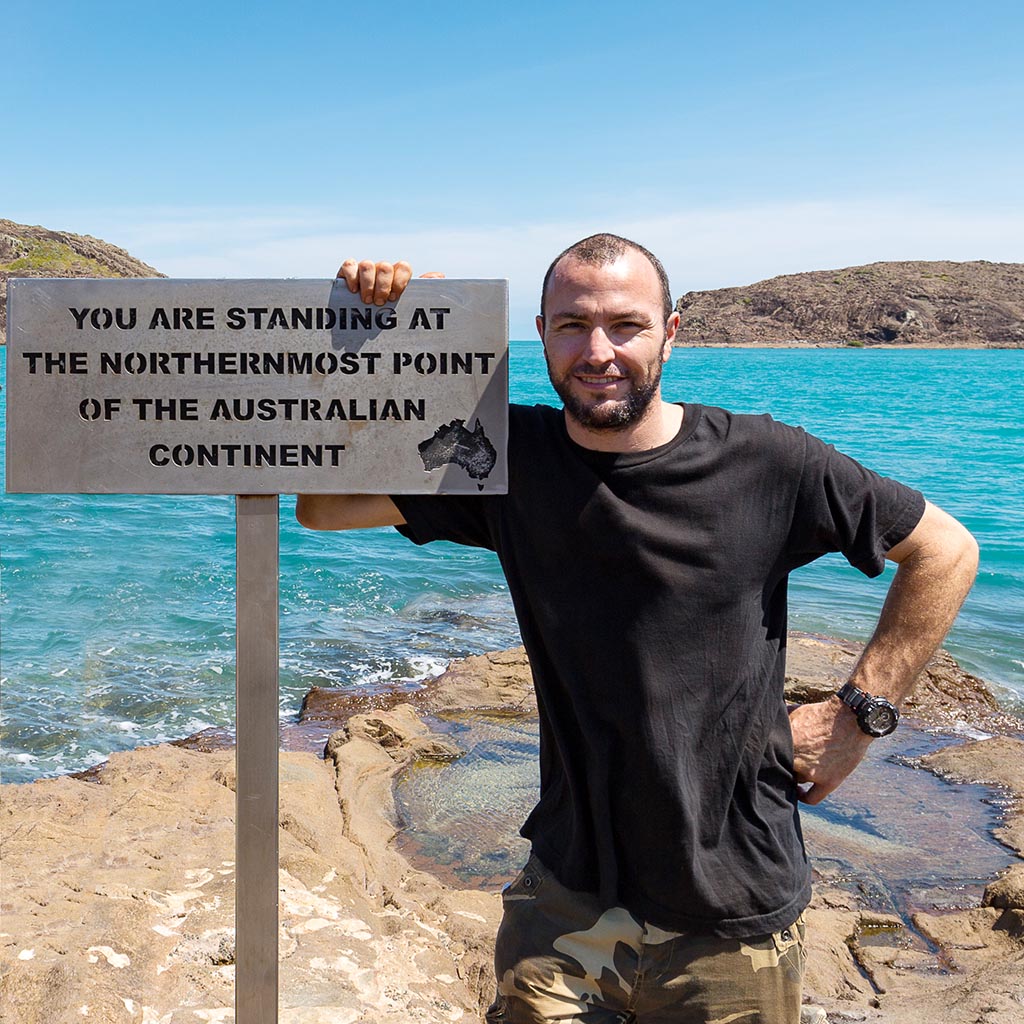


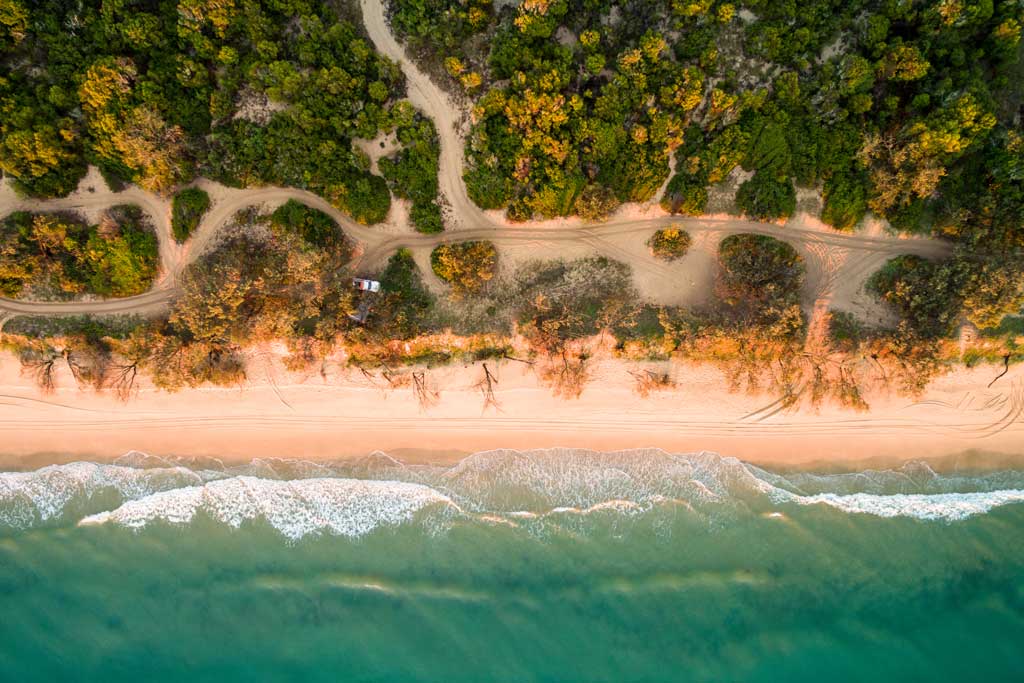
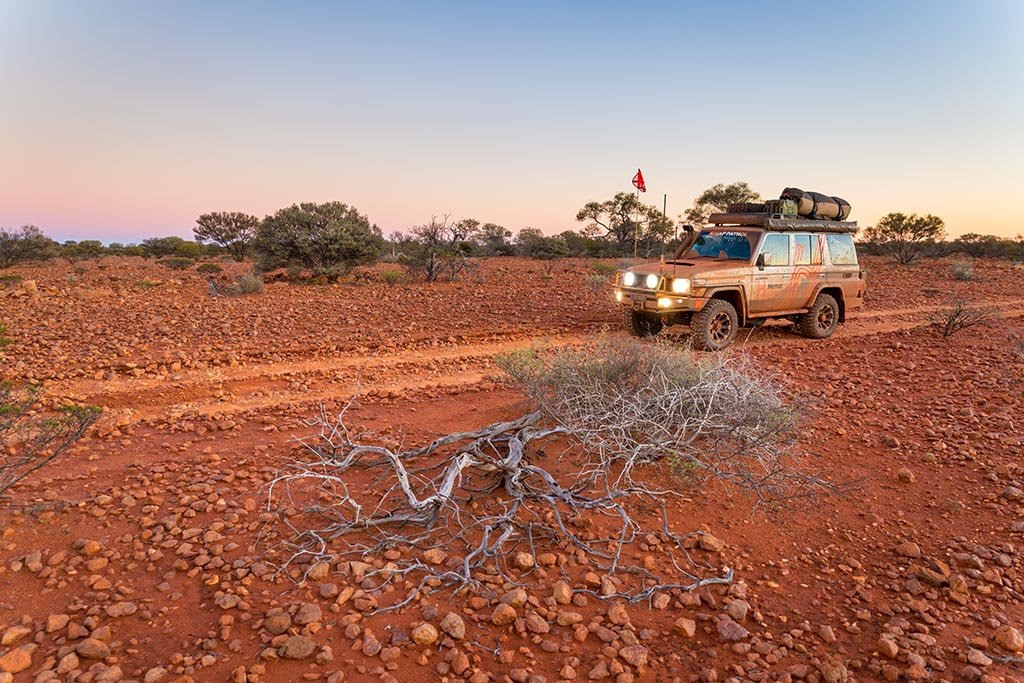
Kerri says
This is a fantastic article and exactly what I need to learn about how to drive on sand. Your thorough and considered explanation makes me feel much more confident! Thanks also for all the great recommendations for gadgets to help out. Off to buy some now!
Matt Williams says
Thanks heaps Kerri. Glad you got a lot out of it. Sand driving is a lot of fun. Just make sure you have your recovery gear! Cheers